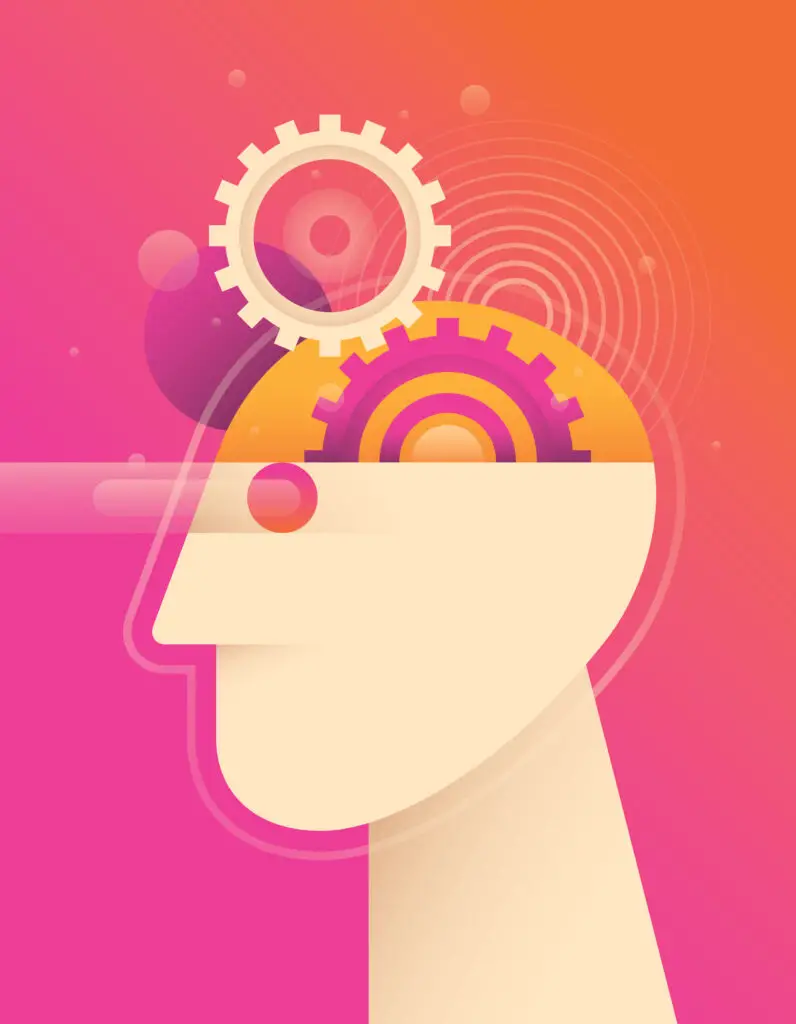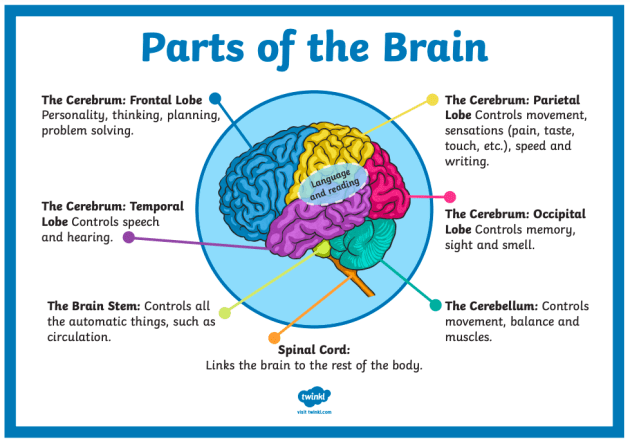
What is consciousness definition?
Consciousness is defined as all thoughts and actions within your awareness. However, you can be conscious of something without being aware of it. This relates to your subconscious. Your subconscious is defined as everything you do automatically without thought.
Scientists found out that the subconscious mind is more powerful than the conscious mind. We, therefore, must be aware of our subconscious mind and how it works.
Scientists also found out that there are different ways to process information. There are some things we think consciously but we do them unconsciously.
It is believed that the subconscious mind controls the body and the conscious mind controls the mind.
What is consciousness made up of?
Consciousness is a mental process that occurs inside our brains. We know that we think because we feel emotions and make decisions based on what we believe. Our thoughts affect how we act and react to things around us. We also use our thoughts to plan and solve problems. But sometimes we don’t realize how much thinking goes into our daily lives.
For example, when you’re driving down the road, you might be thinking about your day, but you probably aren’t thinking of driving. When you do something like that, you’re using subconscious thinking. Another thing that happens without you realizing it is – automatic thinking.
Automatic thinking is when you think about something without even knowing it. You might automatically think about whether you should wear pants or shorts while running errands, or if you should eat breakfast before going out. These types of automatic thoughts happen without you being aware of them.
Brain imaging technology helps scientists understand more about how people think and why they behave the way they do. Scientists can also see how different parts of the brain work together to create thoughts and feelings. This information could help doctors treat illnesses such as depression, anxiety disorders, and schizophrenia.
What is critical consciousness?
Critical Consciousness is a psychological term for the awareness of yourself in relation to others and reality. When someone is conscious about themselves they realize who they are and what they believe in. People who practice Critical Consciousness are aware of the things they do to other people, the thoughts they have, and the way they act in situations. Meditation and mindfulness techniques build our critical consciousness capabilities.
What is subconscious mind?
The subconscious mind is something we use every day without even realizing it. We think about things before we act. We make decisions based on what we already know or believe. We can’t directly control our subconscious mind, but we can learn to control it through our conscious mind.
A study was conducted to determine if there were differences in brain activity when people performed motor tasks while being aware or unaware of them. When participants were performing the task consciously, they showed greater activation in the frontal lobe than when they were performing the task unconsciously or subconsciously. This indicates that the participants’ brains were more active during conscious movements.
Let’s take feelings and emotions for example… A lot of people believe that they feel things, but there is no proof that they do. There is also no proof that there is anything inside our brains called ‘consciousness’. We still don’t know what consciousness is. And even if we did know what it is, there is no way to prove that it exists…
Scientists are beginning to unravel this mysterious phenomenon of consciousness. The term ‘Qualia’ is often used which refers to everything we experience within our minds. This origin and nature of our experiences within our minds have plagued philosophers and scientists from the beginning of time right up until now.
We all know that our conscious experience exists, but scientists haven’t figured out how to study it in its entirety yet.
Brain mechanisms – A quick look at the conscious human brain
The brain generates most of our conscious experiences.
We don’t understand why this happens. But we do know that the brain is organized into different parts. Some parts generate specific types of conscious experiences, such as visual images or feelings. Other parts help us think about what we see, hear, feel, taste, smell, and more.
Scientists are learning how the brain works, and they’re starting to figure out how different parts work together.
Our nervous system involves our brain, nerves, neurons, and spinal cord. We have the Central Nervous system and the peripheral nervous system.
The spinal cord is part of the central nervous system. Spinal nerves are connected to the spinal cord. The spinal cord is responsible for controlling voluntary movement and contains many types of neurons. The spinal cord connects to the brain which is made up of gray matter and white matter. White matter is made up of fibers called axons.
These axons carry signals from neuron cell bodies to other neurons.
Gray matter is made up of dendrites and cell bodies. Dendrites receive information from axons. The cell bodies contain DNA and protein and the DNA stores genetic information the protein, on the other hand, carries out chemical reactions.
The Cerebellum is tiny a part of the brain that helps us learn how to move our bodies. It is located under the back of your head and helps you perform simple tasks such as walking, running, jumping, etc. They contain many different types of nerve cells that help you do things like play an instrument, type on a keyboard, dance, climb stairs, etc.

Additionally, the cerebral cortex controls higher-level processes such as consciousness, thought, emotion, reasoning, language, and memory.
Whereas the prefrontal cortex controls cognitive control functions, and dopamine in the PFC modulates cognitive control, thereby influencing attention, impulse inhibition, prospective memory, and cognitive flexibility.
So both these areas of the brain are fundamental in explaining consciousness and ‘state of mind’.
The Cerebellum and consciousness
Studies have shown that Consciousness is not affected by damage to the cerebellum. Patients who lose part of their cerebellum do not suffer any loss of consciousness. They still have full awareness of what is happening around them. Their memories and feelings are intact. They remember things before they happened. They also know what will happen next.
The cerebellum is almost exclusively a fed forward circuit. There are no complex looping feedback circuits that reverberate with electrical activity passing back and forth. Given the time needed for consciousness to develop, most theorists infer that it must involve back and forth communication between two sets of neurons.
The cerebellum is functionally divided into hundreds or more independent computational modules. Each one operates in parallel, with distinct non-overlapping input and output. They hardly interact with another feature held indispensable to consciousness.
The cerebellum is an essential part of the brain. It controls movement, coordination, and posture but it seems that when it is damaged it is purely these movements that are affected.
The Neocortex and consciousness
The neocortex is the outer layer of the brain.
It contains the most complex part of the brain and plays a role in emotions, attention, thought, perception, and episodic memory.
When we take a look at the brain, we can see that there are parts of the brain that control our senses. There are also parts of the brain that help us make decisions. These parts of the brain work together to give us information about the world around us.
The posterior hot zone plays a key role in tracking our perceptions. Primary sensory areas such as the visual cortex don’t directly contribute to our perceptions. Instead, it is the next stage of processing in the posterior region that gives rise to conscious perception.
Electrical stimulation of cortical tissue reveals that when we stimulate certain parts of our brains, we feel certain emotions. We can see this in the case of epilepsy patients who lose part of their brain function due to epileptic episodes.
When these people lose their ability to control their movements, they may still be conscious but unable to move. If parts of the brain are removed, people may lose the ability to recognize faces, see colors, or move around.
Consciousness meters detect when people are conscious or unconscious.
A good example of how our consciousness might not be affected when the brain is damaged is studying a patient in brain surgery. The patient is kept awake during surgeries to prevent them from losing consciousness. Patients with brain injuries are anesthetized so they won’t feel any pain but their brain is still very much active. Their brains are damaged, but they’re still alive.
Sending pulses of electricity through the skull and into the brain excites and inhibits neurons in connected areas. These activities ripple through the brain, causing a network of EEG sensors to record them. Over time, this information reveals the brain’s activity as waves or patterns.
Consciousness may be revealed by these patterns.
As mentioned before, Consciousness is a state of mind that allows us to perceive our surroundings, think about them, and make decisions based upon those thoughts. However, we do not always know what we are thinking about. This is because our minds are constantly changing, even while we are might be unaware of it.
We may be unaware of some of our thoughts because they are too complex to process. For example, if you are reading this right now, you might be thinking about something else. You might be thinking about your favorite TV show, or how much you love your dog. Or maybe you are wondering why you are writing this paper. Regardless of what you are thinking about, you are still conscious of yourself.
A study tested whether or not people in a vegetative state are conscious. The results show that these patients do respond to stimuli, but they aren’t aware enough to interact.
Setting humans apart
Nevertheless, the enduring mystery is how and why organized chunks of active matter give rise to consciousness. After all, the mind is like any other organ – subject to the same physical law as the heart or the lungs.
What makes it different, what is it about the biophysical properties of a lump of highly excitable tissue that transforms grey goo into the glorious surround sound and Technicolor that constitutes our daily experience?
We know that human beings have consciousness because they have brains, but what makes them different from other animals? What makes humans feel emotions or be able to self-reflect? And what makes people act a certain way? These questions are still trying to be answered by theories of consciousness.
Consciousness is a global phenomenon. When you are conscious of something you have access to information in many different parts of your mind. When you act unconsciously your information is localized to a single part of the brain.
You can’t consciously control what you’re doing if you’re unconscious.
Consciousness arises from a small shared repository of information. This information is accessed by many different modules in the brain. Information is broadcast globally to multiple modules which process these data to talk, store or call up memories.
This is the basics of Artificial Intelligence too. Computers of the future will be self-aware and therefore have a thinking mind as well as a conscious mind. This means that they will understand what they’re doing. They’ll know when they’ve done something wrong or right, and they’ll be able to explain themselves to us.
Theory of Consciousness
Integrated information theory attempts to provide a framework capable of explaining why some physical systems are conscious, why they feel the particular way they do in particular states, and what it would take for other physical systems to be conscious.
Integrated Information Theory (IIT) is an approach to aspects of consciousness based on the idea that experiences form networks. These networks are organized around features that are common to many experiences. For example, when you see something red, you may also hear a sound, feel a sensation, smell a scent, taste a flavor, and/or touch a texture. You might notice these things together, but they do not necessarily belong to the same network. In this case, there is a distinction between seeing red and hearing a sound. This distinction means that each experience is unique and separate from others.
Neuroscientist, Giulio Tononi, further explains this theory that it proposes a mathematical measure of consciousness called Phi. He says that it is a unique value that can be calculated for each individual. This means that there is a number that represents how much an individual feels like themselves.
Two challenges lie ahead within all these theories and studies relating to consciousness. One involves observing and probing the complex networks of neurons making up the brain. This takes time, as there are many different types of cells within the brain. Another challenge is verifying or falsifying the two current theories about consciousness. These theories include quantum mechanics and the free will theorem.
6 Quick differences – what is subconscious and conscious mind?
1. Consciousness and subconsciousness are separate experiences of the mind but they are interwoven to work together and share information
2. The conscious mind usually relates to creativity and stimuli reaction. We do not act on impulse or instinct and therefore can choose to change our reactive behavior.
3. The conscious mind also determines your aspiration, dreams, goals, and personal desires.
4. The subconscious mind determines your habits and habitual behavior which relates to an automatic response to a stimulus.
5. We can experience the conscious mind and subconscious mind at the same time. eg Thinking of what we are going to cook for dinner (conscious mind) while we are driving (subconscious mind).
6. We can easily transform the conscious human mind since it is everchanging through different thoughts and emotions but the subconscious human mind is slightly more set in stone
Imagine a world where your subconscious mind changes as quickly as your conscious mind does. God forbid, you’d end up having to learn how to walk every day. (medium.com)
So how might we rewire our subconscious mind to create ultimate change in our perceptions and ‘automated’ responses?
This is where mindfulness and meditation come in…
Mindfulness, meditation, and correlates of consciousness
Human Consciousness refers to your individual awareness of your unique thoughts, memories, feelings, sensations, and environments. Essentially, your consciousness is your awareness of yourself and the world around you. This awareness is subjective and unique to you. If you can describe something you are experiencing in words, then it is part of your consciousness.
This ever-shifting stream of thoughts can change dramatically from one moment to the next, but your experience of it seems smooth and effortless. (verywellmind.com)
Meditation is one of the things that can change our state or level of consciousness as it involves self-reflecting and building self-awareness towards our thoughts and mental state these are all factors that relate to our human behavior. Changes in consciousness involve changing our thinking, perceptions, understanding, and interpretations of our perceived reality. This all relates to human awareness.
Other things that alter our consciousness include; dreams, drugs, hallucinations/hypnosis, sleep, coma, confusion.
Meditation – what is awakened consciousness
Meditation helps us relax and focus on ourselves, and it also teaches us how to deal with stress. Most important, meditation allows us to achieve enlightenment or an ‘awakened sense of being’. We should try to practice meditation at least once a week for around 20 minutes.
Our state of consciousness changes according to what we focus on. When we meditate we become aware of all mental activity, and through this awareness, we can create change. In meditation, we talk about different states of mind where we feel “calm,” “relaxed,” etc., which reflect different levels of concentration of our awareness.
The best way to describe how meditation affects our state of consciousness is that we change our perspective of thinking. Meditation helps us become less self-centered and feel compassion for others and ourselves. This leads to experiencing feelings such as altruism, love, joy, gratitude, empathy, and forgiveness.
Awakened Consciousness is a technique used in hypnosis, which allows subjects to “enter” into another state of awareness. The idea behind this technique is that people who are hypnotized often experience a trance-like state where they enter into a different mental space. A similar experience is had when one enters a deep state of meditation.
Meditation alters the way we think and feel about ourselves and others. Through consistent practice, meditation can change our perception of reality. This can be seen when we experience the blissful state of deep relaxation which follows meditation. People who meditate regularly tend to be happier and more positive towards life. They also often develop greater patience, tolerance, compassion, empathy, insight, self-awareness, and self-control.
Meditation alters the way you think of yourself, others, and the world around you. Through meditation, you can become aware of your thoughts and emotions, which allows you to gain greater clarity in your life. The practice of meditation helps us develop our ability to focus, relax, calm down, and be present.
Through cultivating this mindful, conscious awareness towards our inner selves we can also start to create change within our subconscious mind by practicing conscious behavior skills.
How does this happen?
Well… our perceptions, emotional experiences, and thoughts somewhat control our automated actions and reality so through changing these we create a deeper awareness toward our reactivity, habits, and automated responses. A good way to explain this would be “to think before we act”. The greater the part mindfulness plays in our lives the greater the time between stimuli, reaction, action, and response. This habitual process can then start to shift by simply becoming aware of it.
By taking a mindful approach to everything we do we don’t act on impulse or react but we rather give thought-out intentions to our actions. We take teach ourselves to be non-reactive.
So in summary…
Conscious minds, subconscious minds, and unconscious minds are all different states that our brain experiences. The human consciousness as well as the concept of consciousness is very complex whether we view it from a spiritual, psychological, or scientific point. The neural correlates and complex behavior in humans are still partly unexplained by science.
The one thing we do know however is meditation can greatly influence our state of core consciousness by physically altering the brain’s processes towards thinking and therefore altering our perceptions towards our reality. We can take unconscious processes and transform them into mindful, conscious processes which can even further start to heal our emotional consciousness and physical state of being.
The power of meditation!



